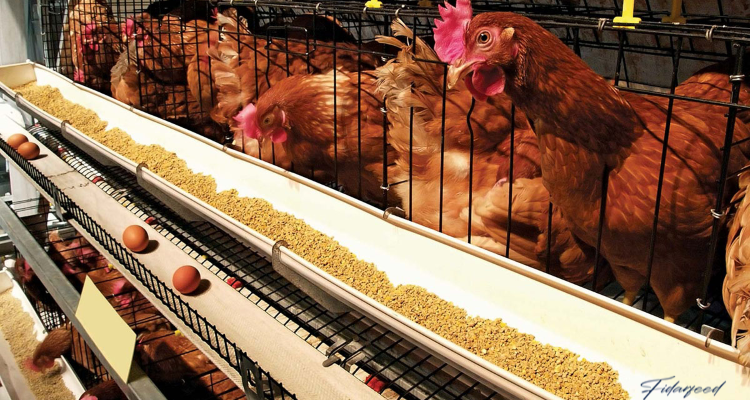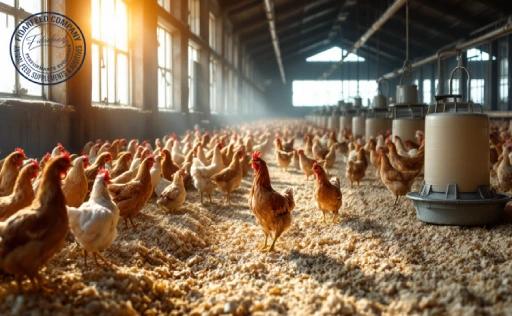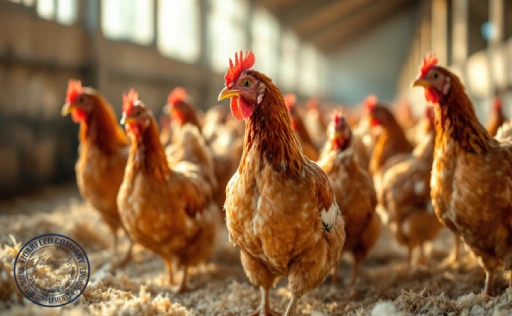When it comes to raising layers, nothing affects hen health and egg production quite like temperature. Extreme heat or cold not only reduces egg yield but also increases stress, weakens immunity, and raises mortality risks. Whether you’re an experienced breeder or just starting out, managing temperature inside poultry housing is one of the smartest investments you can make. In this guide, we’ll walk through the Top 10 Ways to Control Temperature in Layer Chicken Housing for Healthier Hens. Each method is practical, science-backed, and tailored to help you keep your flock productive, comfortable, and thriving—no matter the season. Keep reading to learn strategies that can make a real difference in your operation.
Why Temperature Control Matters for Layer Chickens’ Health and Egg Production
Hens are highly sensitive to temperature. Their optimal comfort zone, also known as the thermoneutral zone, typically ranges from 18°C to 24°C (64°F to 75°F). When temperatures go beyond this range, chickens experience stress, which affects their feed intake, egg-laying consistency, and even shell quality.
Learn more about: Processed Meat Meal
Research shows that laying hens exposed to high heat reduce feed intake by up to 15%, leading to poor nutrition and fewer eggs. In cold conditions, birds expend more energy to stay warm, leaving less energy for egg production. The result? Thinner shells, fewer eggs, and higher susceptibility to disease.
Temperature control isn’t just about comfort—it’s a pillar of biosecurity, performance, and profit.
Insulation Strategies to Keep Layer Houses Cool in Summer and Warm in Winter
Insulation acts as a thermal barrier, keeping heat out during summer and holding warmth in during winter. Materials like polyurethane foam, fiberglass, and reflective foil are widely used because they’re effective and relatively affordable.
For example, adding a 5–10 cm layer of polyurethane foam to walls and ceilings can significantly stabilize indoor temperatures. In areas with large temperature swings between day and night, sandwich panels (steel sheets with insulation between) are excellent for controlling thermal fluctuation.
Learn more about: Why Poultry Producers Trust Bentonite in Layer Feed
Don’t forget the floor—using raised flooring or insulating material can prevent heat loss in winter and help keep the coop dry.
Ventilation Systems That Improve Airflow and Reduce Heat Stress
Good ventilation doesn’t just remove heat—it removes moisture, ammonia, and pathogens. Poor airflow leads to heat buildup, respiratory issues, and a high-risk environment for disease spread.
Natural ventilation—through side vents, ridge openings, or adjustable curtains—works well in mild climates. However, in hotter regions or closed housing, mechanical systems like exhaust fans and ridge ventilators are essential.
Learn more about: Boost Your Egg Production with Classica Layer Chickens
Place vents strategically to create a cross-ventilation pattern. Air should flow freely from one end of the house to the other, ensuring all birds benefit equally from the fresh air.
Using Fans and Cooling Pads to Lower Heat During Hot Weather
In peak summer months, even good insulation and ventilation might not be enough. That’s where fans and cooling pads come in.
Fans, especially high-capacity axial or tunnel fans, pull hot air out of the house while drawing cooler air in. Pair these with evaporative cooling pads—which lower air temperature through water evaporation—and you get a dramatic cooling effect.
Learn more about: Common Layer Hen Diseases: Prevention & Treatment
Studies show that evaporative cooling systems can reduce indoor temperatures by 7–10°C (12–18°F), significantly lowering heat stress in birds. Be sure to maintain your cooling pads and fans to prevent mold and ensure efficient operation.
The Role of Heating Systems in Preventing Cold Stress in Layer Chickens
When temperatures drop, layers need external heat sources to stay warm. Brooders (used for chicks) and space heaters (for adult birds) are common solutions. Radiant heaters, which warm the birds directly rather than just the air, are often more efficient.
Keep in mind, uneven heating can be just as harmful as no heating. Place multiple heaters evenly throughout the house and monitor temperatures regularly. Ensure there’s no open flame or smoke risk—safety first.
Learn more about: Broiler Chicken Health at Risk? Know the Signs of Dysentery
Cold-stressed birds consume more feed but produce fewer eggs. A well-maintained heating system can prevent such losses and support better immune function during winter.
Automated Temperature Monitoring: Smart Tech for Smarter Chicken Farming
Manual checks are useful, but they’re not foolproof. Today’s automated systems can detect even minor temperature fluctuations and adjust fans, heaters, or ventilation in real time.
Install thermostats, digital sensors, and automated controllers to reduce guesswork. These smart tools keep conditions consistent, reduce labor costs, and improve efficiency. Many modern systems also send alerts to your phone or computer if anything goes wrong—giving you time to act before a small issue becomes a big problem.
Learn more about: Cobb Chicken Breeds: An Overview
This technology might seem advanced, but it’s increasingly affordable and widely adopted by successful layer farms worldwide.
Proper House Design for Natural Temperature Regulation
The way your poultry house is built plays a silent yet powerful role in temperature control. Consider roof height, orientation, window placement, and building materials.
For example, houses facing east-west receive less direct sun exposure during peak afternoon heat. High ceilings help hot air rise and move away from the birds. Overhangs on the roof and proper shade can significantly reduce heat buildup.
A thoughtfully designed building can naturally regulate temperature and reduce your reliance on mechanical systems—saving you money in the long run.
Humidity Control: The Hidden Factor in Maintaining Healthy Layer Environments
Humidity might not be as obvious as heat, but it’s just as critical. High humidity levels—especially when combined with heat—can reduce a chicken’s ability to cool itself through respiration. This worsens heat stress and increases mortality risk.
Ideal relative humidity should stay between 50–70%. Use hygrometers to monitor levels and keep litter dry. Wet litter not only traps heat but also encourages mold, ammonia buildup, and disease.
Learn more about: The Chicken Egg Production Cycle: A Comprehensive Overview
Controlling humidity is about balance: use fans to remove moist air, fix water leaks quickly, and avoid over-watering in evaporative cooling systems.
Emergency Tips to Handle Sudden Weather Changes in Layer Farms
Weather can change fast. One minute it’s cool, the next it’s a heatwave or frost. Being unprepared can lead to massive losses.
Keep backup generators for power outages. Have portable fans and heaters on hand. Store extra feed and water to avoid supply interruptions. Train your staff to recognize signs of heat or cold stress—panting, huddling, reduced movement—and act fast.
Also, consider installing alert systems that warn you if temperatures fall outside safe limits. Preparedness can save lives—and your livelihood.
Routine Checks and Maintenance for Long-Term Temperature Stability
Even the best systems need regular maintenance. Schedule weekly checks for fans, heaters, insulation, and ventilation ducts. Clean filters, lubricate moving parts, and inspect for wear and tear.
Create a logbook or digital tracking system to record daily temperature readings, humidity levels, and equipment performance. These records help spot patterns and predict issues before they affect your flock.
Consistency is the secret to success—stable environments lead to stable production.
Conclusion
Temperature control is more than just a comfort measure—it’s a foundation for productivity, health, and long-term success in layer farming. By applying these Top 10 Ways to Control Temperature in Layer Chicken Housing for Healthier Hens, you’ll not only protect your investment but also support happier, more productive birds.
We hope this guide gave you valuable, actionable insights. What’s your biggest challenge with temperature control? Have you tried any of these strategies on your farm? Let us know in the comments—we’d love to hear your thoughts, questions, or tips from the field!








